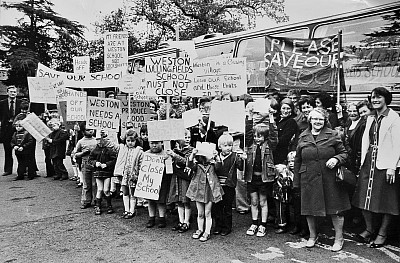Weston Lullingfields Village
The Village
The parish of Weston Lullingfields, which includes the settlements of Weston Lullingfields village, Weston Common, Weston Wharf, Nillgreen and Stanwardine in the Wood, is situated on the western side of the north Shropshire plain about 11 miles north west of Shrewsbury and 10 miles south of Oswestry. It covers an area of approximately 2,000 acres.
Weston Lullingfields has always been an agricultural community with, in the 19th and early 20th centuries, at least 25 farmers, some of them called ‘cowkeepers’ or ‘cottage farmers’. Farming in the area is traditionally dairy.
An important event in the history of the village occurred when a branch of the Ellesmere Canal reached Weston and there stopped for lack of money in 1797. Weston Wharf became a busy place, with its warehouse, limekilns, stables, weighing machine, clerk's house and the Boat Inn. Cottages were built near the wharf and along the road from Weston Common. Large quantities of lime, slate, coal and other goods were brought in by barge and collected by horses and carts from the surrounding area, while timber, cheese and farm products were loaded into the returning barges. All this activity was declining before 1914, and when the bank burst in 1934, it was left unrepaired, until finally the canal was filled in.
Within living memory a tailor used to sit working cross-legged in his cottage and a woman and her two daughters ran a laundry at Dumpling Hall - named from the round tied-up bundles of washing. The last butcher's shop, with fields for grazing and outhouses for slaughtering, lasted until 1976.
(The information above is taken from the Shropshire Villages book, written by members of Shropshire Federation of Women’s Institutes and published by Countryside Books).
The Village School was constructed, with residence for the mistress, in 1871 by the trustees of the charity of Miss Harris, of Newtown, Baschurch, for 43 children (Kelly's Directory of Shropshire 1895).


